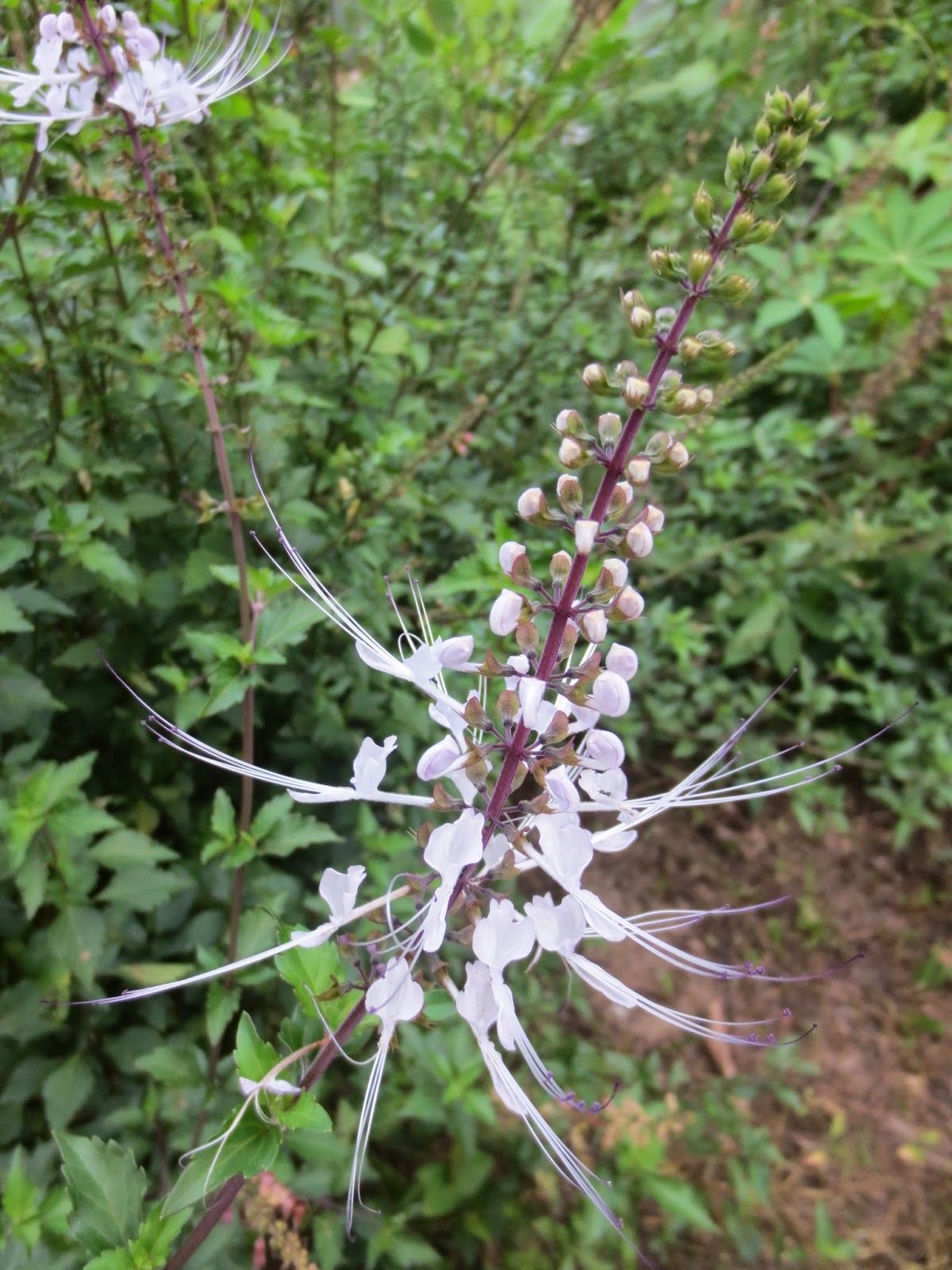More than just a flower, Roselle
Living in Malaysia, it is easy to grow Roselle (scientific name: Hibiscus sabdariffa L., Malay name: Asam Belanda) plants which are from the Hibiscus family. Given the right care, it produces flowers lavishly. The beautiful flowers have delicate petals of light pink incisor with a dark red centre. As part of your flowering edible landscape, it is a great choice. It can grow tall, reaching over 2m in height. The growth can be controlled by regular pruning which not only shapes the plant but at the same time encourage new growth which leads to more flowers.
 Roselle is interesting in that it is what I call a flower fruit or the correct term is calyx (plural form: calyces). It is unique in shape and texture with a dark red color which turns almost black-red when dry. However, when you turn it into a juice, it become a blood red color. As part of a daily diet designed to promote good health, the juice is rich in vitamin C and other nutrients including anti-oxidants. For me, it is the drink of choice as opposed to processed fruit juices that contains all kinds of additives and artificial colouring.
Roselle is interesting in that it is what I call a flower fruit or the correct term is calyx (plural form: calyces). It is unique in shape and texture with a dark red color which turns almost black-red when dry. However, when you turn it into a juice, it become a blood red color. As part of a daily diet designed to promote good health, the juice is rich in vitamin C and other nutrients including anti-oxidants. For me, it is the drink of choice as opposed to processed fruit juices that contains all kinds of additives and artificial colouring.
Based on a study by Purdue University, it is high in calcium, niacin, riboflavin, vitamin C and iron. It is also caffeine-free hence it can be made as an after-dinner tea for those who cannot consume caffeine after late afternoon or they have a hard time sleeping.
 It is easy to make the drink. Just peel-off the petals from the seed pod, chop it into small pieces, place it in a claypot and bring it to boil. A dark red liquid can be produced. The resulting liquid is very sour. Do not discard the chopped petals as it can be consumed either by adding it to the drink or turned into a jam. When it is drank warm, it is often referred to as Roselle tea but when it is drank cold, it is referred to as Roselle juice. The drink can be sweetened with honey, raw sugar or brown sugar. I do not recommend white sugar as it adds unhealthy benefits to the drink.
It is easy to make the drink. Just peel-off the petals from the seed pod, chop it into small pieces, place it in a claypot and bring it to boil. A dark red liquid can be produced. The resulting liquid is very sour. Do not discard the chopped petals as it can be consumed either by adding it to the drink or turned into a jam. When it is drank warm, it is often referred to as Roselle tea but when it is drank cold, it is referred to as Roselle juice. The drink can be sweetened with honey, raw sugar or brown sugar. I do not recommend white sugar as it adds unhealthy benefits to the drink.
You can also use it in your cooking to add the sour flavour as well as red color to your dish.
I am not a proponent of artificially and chemically produced supplements or supplements that undergo chemical process and later have all kinds of additives and preservatives hence the drink is one of my choice of drinks for vitamin C.
It also has anti-hypertensive properties and studies have been done and found that it produces a positive effect in lowering blood pressure – another plus for me as being from a family of history of high blood pressure, I see this drink as a preventive as well as a curative measure. With our hot climate, it is a cooling drink to help quench thirst.
I am recovering from a cold so this is my daily drink now with its high natural ascorbic acid content (vitamin C) as well as the anti-bacterial and anti-inflammatory properties to aid in natural healing.
The Roselle can also be made into a probiotic drink by undergoing a fermentation process. The benefit of doing this is apart from the probiotics, you can store the fermented concentrate for a long period without the need for refrigeration.
All in all, why I love it as a daily drink or regular drink : I get my vitamins and minerals which help me boost my immune system, reduces hypertension (my blood pressure will rise after a hot day working outdoors), quench my thirst, increase my metabolism and reduce the hydrolysation of starch to sugar), cancer prevention, decreases bronchoconstriction so I can breathe better and helps keep my bones and teeth healthy. What more can I ask from a drink? All these goodness also makes it the juice I choose for my 3 year-old – to me it is much better than a lot of the processed fruit juices out there – and he loves it.
As with many natural ways, it takes regular consumption to get the best benefits – it is not a miracle cure nor does it give immediate effects like pharmaceutical drugs. However, it is a way of enjoying healthy food for long term benefits without the many negative side effects. So, let us maximise one of nature’s bounty.



















